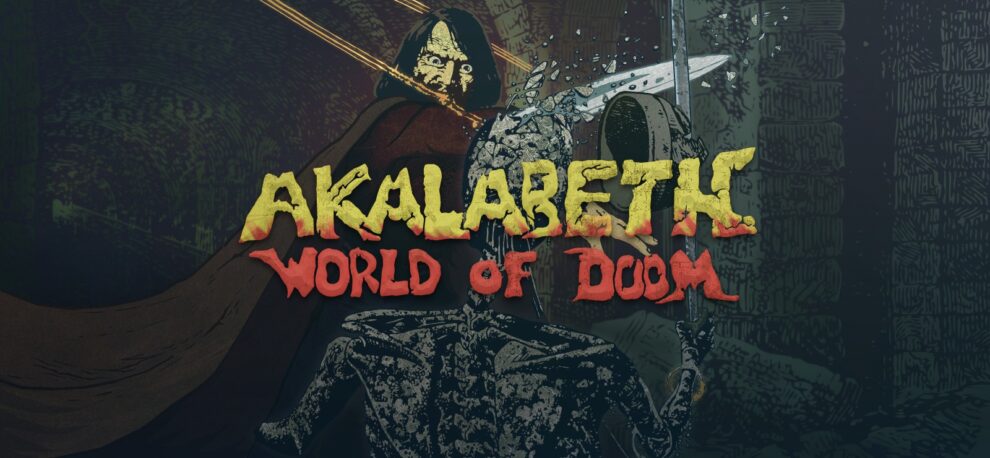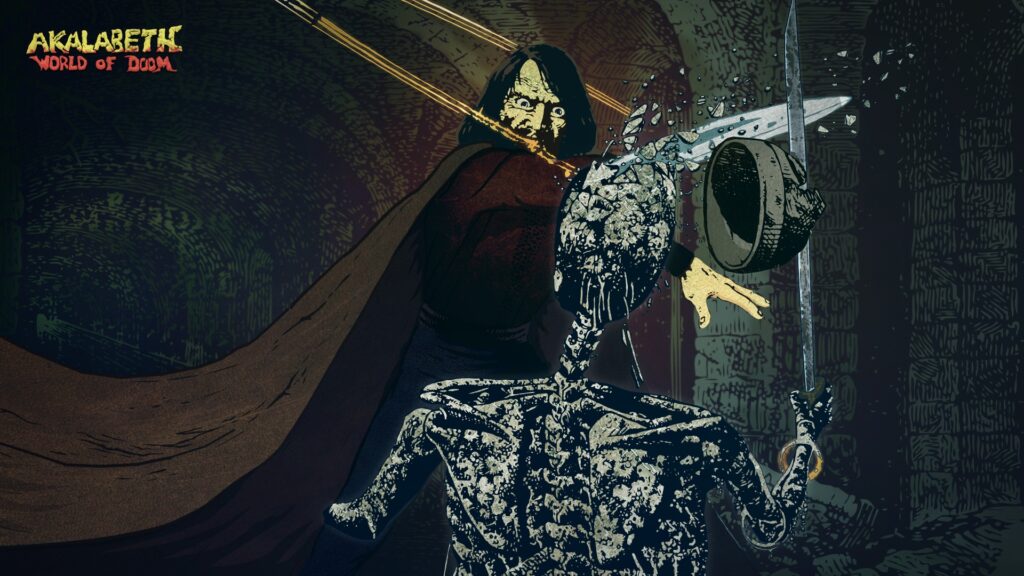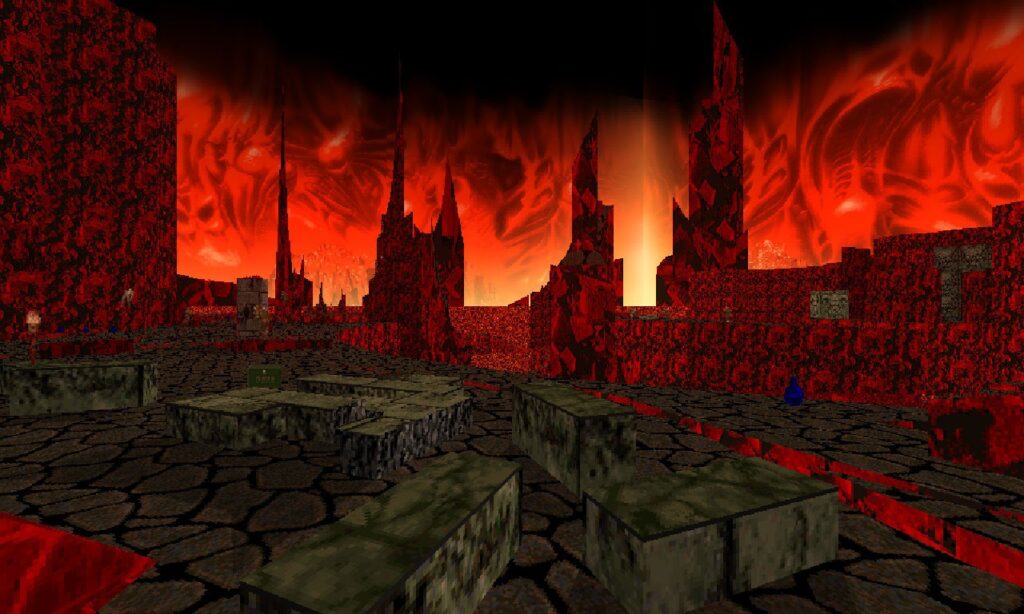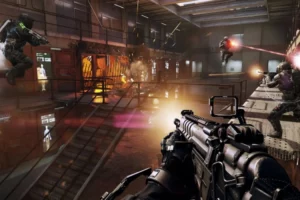2023 marks a monumental milestone for video game history, as the groundbreaking first-person shooter Doom celebrates its 30th anniversary. First released in 1993, Doom redefined gaming with its shocking violence, revolutionary graphics and audio, and utterly addictive gameplay.
To this day, Doom remains one of the most iconic and influential games ever made. Its shadow looms large over the entire FPS genre, establishing standards that developers still adhere to.
In celebration of Doom’s legacy, co-creator John Romero released an all-new addon campaign for the original game called Sigil. This 9-level megawad returns players to the nightmarish environs that defined a generation of games.
Join us for a retrospective on Doom’s origins, its pioneering contributions to video games, and why Sigil makes the perfect anniversary gift for longtime fans.
The History of Doom: Kickstarting a Genre
Doom was far from the first FPS game ever made. Maze War and MIDI Maze both deployed first-person perspectives in the 1970s. Yet Doom built the framework that practically all shooters follow today.
Released as shareware in 1993, it quickly became a phenomenon. Doom offered a fully-realized 3D environment with fluid animation and a level of visceral violence never seen before. Demand grew so swiftly that Doom helped kickstart the multiplayer revolution.
In 1994, Doom II: Hell on Earth built on that success by introducing new weapons, enemies like the Revenant demon, and formative deathmatch modes. Doom’s seminal status was set in stone.
The series inspired a flood of imitators through titles like Rise of the Triad and Duke Nukem. Doom became so ubiquitous that “doom clones” entered the gaming lexicon. Developers still regularly pay homage with Easter eggs and homages.
Why Was Doom So Revolutionary?
For 1993, Doom’s technical merits were lightyears beyond its peers. It rendered expansive 3D environments with non-static enemies and lighting effects like flickering lights. Players battled Imps and Cacodemons across Phobos and Deimos with an impressive arsenal of weapons.
Yet Doom’s importance stems beyond technology alone. It married pioneering graphics with incredible level design and refined gameplay to produce an utterly addictive experience. Let’s examine the specific elements that made Doom pop culture dynamite:
Non-Static Environments
Early shooters utilized single screens with unmoving backdrops. But in Doom, everything feels alive. Lights flicker, walls slide open, and enemies swarm through doors and openings. This dynamism made the world feel more “real” than ever.
Iconic Bestiary
The hideous monster roster like Pinkies, Hell Knights, and the dreaded Cyberdemon all grew to icon status. These creatively-designed foes kept gameplay intense, forcing players to constantly adjust tactics. Multiplayer cemented certain enemies like Spectres and Demons as tactical counters.
Revolutionary Audio
Doom used sound to heighten immersion better than any predecessor. From ambient tracks to demonic growls and the irresistible pump of the shotgun, Doom’s audio was key to its nightmare palette. The crunchy sound design provides instant sensory feedback for combat.
Compelling Level Design
While the graphics and monsters grabbed headlines, Doom’s masterful levels drove replay value. Complex labyrinths with hidden caches of weapons and powerups made progression feel earned. Discovering new routes and secrets through creative exploration rewarded curiosity. This remains Doom’s strongest legacy trait.
Of course, controversy around Doom’s violent content also fueled interest. Condemnation from parents and politicians recall similar reactions tolindandid Mortal Kombat. But at its core, Doom endures thanks to purity of design rather than shock value. 30 years on, there’s still nothing quite like it.
Sigil Celebrates 30 Years of Iconic Shooting
Fittingly, Doom co-creator and FPS pioneer John Romero launched an all-new megawad campaign to commemorate such a massive anniversary. Enter Sigil, a free 9-level addon stuffed with hellish enemies to slaughter, diabolical secrets to uncover, and guns to blaze.
Sigil transports veteran Doomguys back to the iconic setting in style. Let’s examine what awaits within this wicked megaWAD.
Sigil’s Story and Setting
Sigil launches players into a dire scenario: 60 demon lords besiege Earth, with legions at their command. As the Doom Marine, players leap into the fray via a demonic portal and blast their way across 9 brutal levels toward an epic showdown.
The environments mix hellish terrain like Sulphur Palace with unearthly vistas, testing both navigation and combat tactics. Glimpses of early areas like Phobos hint at reality-warping forces waiting to be unraveled.
Rewarding, Demanding Gameplay
Sigil retains Doom’s trademark intensity through speed and enemy density. Foes attack swiftly and in numbers, keeping pressure high. But your vast weapon supply enables rip-and-tear dominance, especially improved mainstays like the plasma rifle and BFG.
Each level also introduces a new weapon modification, altering key tools. A triple barrel for the shotgun offers extra stopping power while the Unmaker annhiliates demons. Random spawns also boost replayability.
For true sadists, “DeathLabel” difficulty conjures up Doom’s worst to contend with. Sigil also packs secret levels and surprises for the diligent to uncover. Suffice to say, rip and tear to your heart’s content!
A Worthy Celebration for an FPS Pioneer
Sigil is more than just another wad – it’s a feature-rich anniversary homage expertly tuned by the co-creator himself. Those late nights blasting through E1M8 can live again through Sigil’s chaotic, rewarding combat arenas.
The megawad walks the fine line between paying tribute to Doom’s legacy and introducing new ideas seamlessly. Callbacks to iconic monsters are complemented by new hazards and modifications that fit naturally alongside 1994 arsenals.
For newcomers, Sigil also serves as a graduation into OG Doom’s purity of play. There are no scripts or gimmicks here, just raw shooter action at its finest. Master the tools, overcome the unrelenting evil. That enduring loop remains captivating despite technical advances.
It’s the perfect way to culminate 3 decades of pioneering legacy. Here’s to 30 more years of the iconic challengers, hellscapes, and shotguns that doom helped introduce!
The Bottom Line
2020s gaming is utterly unrecognizable from the pixelated beginnings across 1993 modems. Yet Doom itself defies time through the sheer replayability and fun factor of its formula.
Sigil proves Romero and crew knew precisely what made those original games classics-worthy. It retains that purist shooter spark framed by bows to nostalgic fans.
If you were cutting teeth on pixels back then or simply appreciate shooters today, Sigil is mandatory cannon fodder. The Icon of Sin awaits…like it was 1993 all over again.


















Add Comment